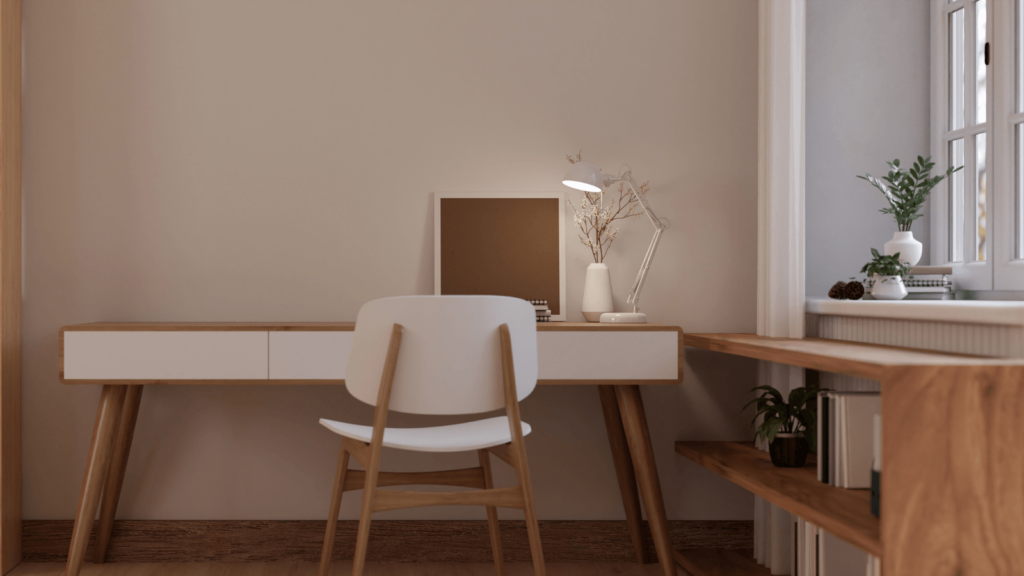In a world where the ability to acquire and apply knowledge is increasingly valuable, a well-designed study area becomes more than just a room – it becomes a launchpad for future achievements and personal growth.
Building an optimal study sanctuary is an ongoing process that requires thoughtful consideration of physical, psychological, and technological factors. By investing time and resources into crafting this environment, we lay the groundwork for not just academic success, but for cultivating lifelong learning habits.
A dedicated study area is an environment that fosters deep learning, critical thinking, and academic growth. This article delves into the multifaceted aspects of designing a space that nurtures cognitive development and academic success.
The Psychology of Space and Learning
Research in environmental psychology suggests that our surroundings significantly impact our cognitive processes. A well-designed study area can enhance concentration, improve information retention, and even boost creativity. Key factors include:
- Spatial cognition: The brain forms associations between physical spaces and mental states. A consistent study location helps the mind quickly shift into “learning mode.”
- Cognitive load theory: Minimizing environmental distractions reduces extraneous cognitive load, allowing more mental resources for learning tasks.
- Circadian rhythms: Aligning study times with natural body rhythms can optimize cognitive performance. Consider how the study area’s lighting and usage align with these biological patterns.
Architectural and Design Considerations
- Acoustics: Beyond simple quiet, consider sound absorption and diffusion. Soft furnishings, acoustic panels, or even white noise machines can create an optimal auditory environment.
- Chromatics: Color psychology plays a role in learning. Blues and greens can promote calmness and focus, while accents of yellow or orange might stimulate creativity. Avoid overly stimulating or gloomy color schemes.
- Ergonomics: Proper posture affects cognitive function. Invest in adjustable furniture that can grow with the student, considering factors like desk height, monitor positioning, and lumbar support.
- Biophilic design: Incorporating natural elements or views of nature can reduce stress and improve concentration. Consider adding plants or positioning the study area near a window with a natural view.
Personalization and Flexibility
While structure is important, the ideal study sanctuary should also adapt to individual needs:
- Learning style accommodation: Visual learners might benefit from large whiteboards or mind-mapping software, while kinesthetic learners might need space for movement or hands-on activities.
- Time-blocking zones: Designate areas for different types of tasks – deep work, creative brainstorming, or collaborative online sessions – to help compartmentalize activities.
- Motivational elements: Thoughtfully chosen inspirational quotes, achievement trackers, or goal visualizations can provide encouragement without becoming distractions.
Fostering a Culture of Learning
The study sanctuary should be more than just a physical space; it should embody a commitment to education within both the home and school environment:
- Family and counselor involvement: Regular check-ins and discussions about the study area’s effectiveness can help refine the space and demonstrate support for academic pursuits and college readiness.
- Modeling behaviors: When adults, whether they are family members, counselors, or teachers, use the space for their own learning or focused work, it reinforces the area’s importance and purpose to students.
- Evolving with needs: As academic demands change, from elementary school through higher education, the study sanctuary should adapt accordingly. Regular reassessment ensures the space remains relevant and effective in supporting students’ evolving academic and career goals.
Creating an optimal study sanctuary is an ongoing process that requires thoughtful consideration of physical, psychological, and technological factors. By investing time and resources into crafting this environment, we lay the groundwork for cultivating lifelong learning habits. In a world where the ability to acquire and apply knowledge is increasingly valuable, a well-designed study area easily becomes a launchpad for future achievements and personal growth.


